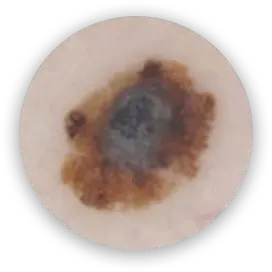Asymmetry - one half unlike the other half.
Border irregular - scalloped or poorly circumscribed border.
Colour Variation: From one area to another; shades of tan and brown, black, sometimes white, red or blue.
Diameter larger than 5mm (diameter of a pencil).
